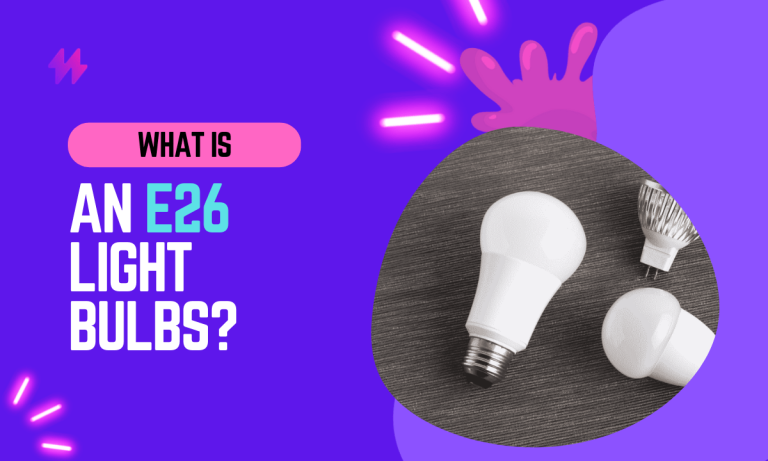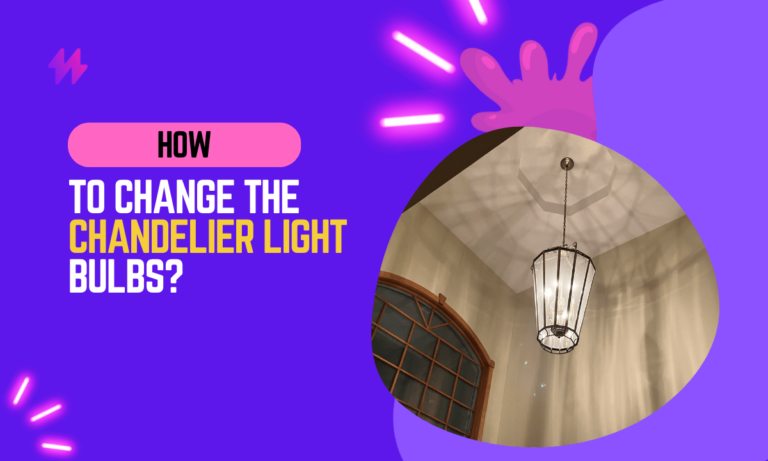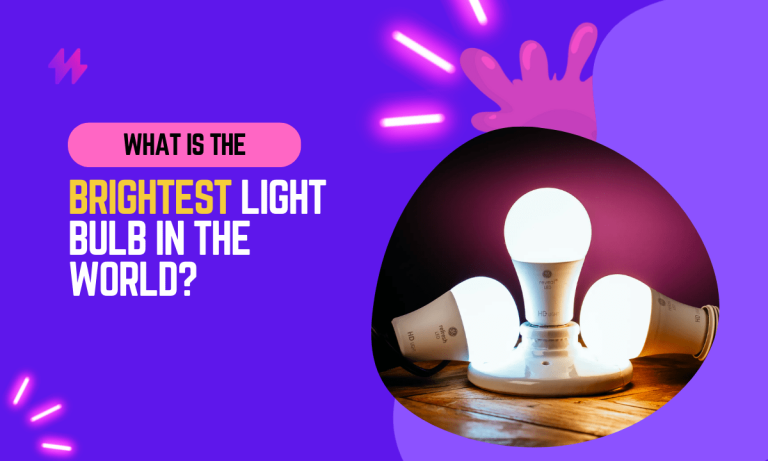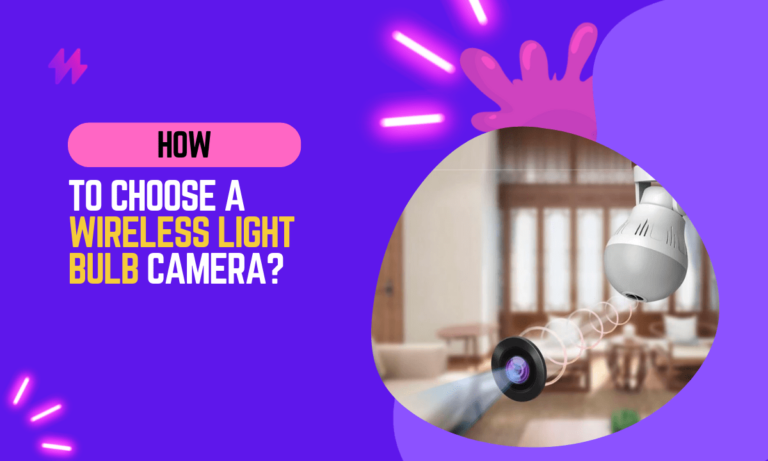How Far Apart Should 6-Inch Recessed Lights Be?
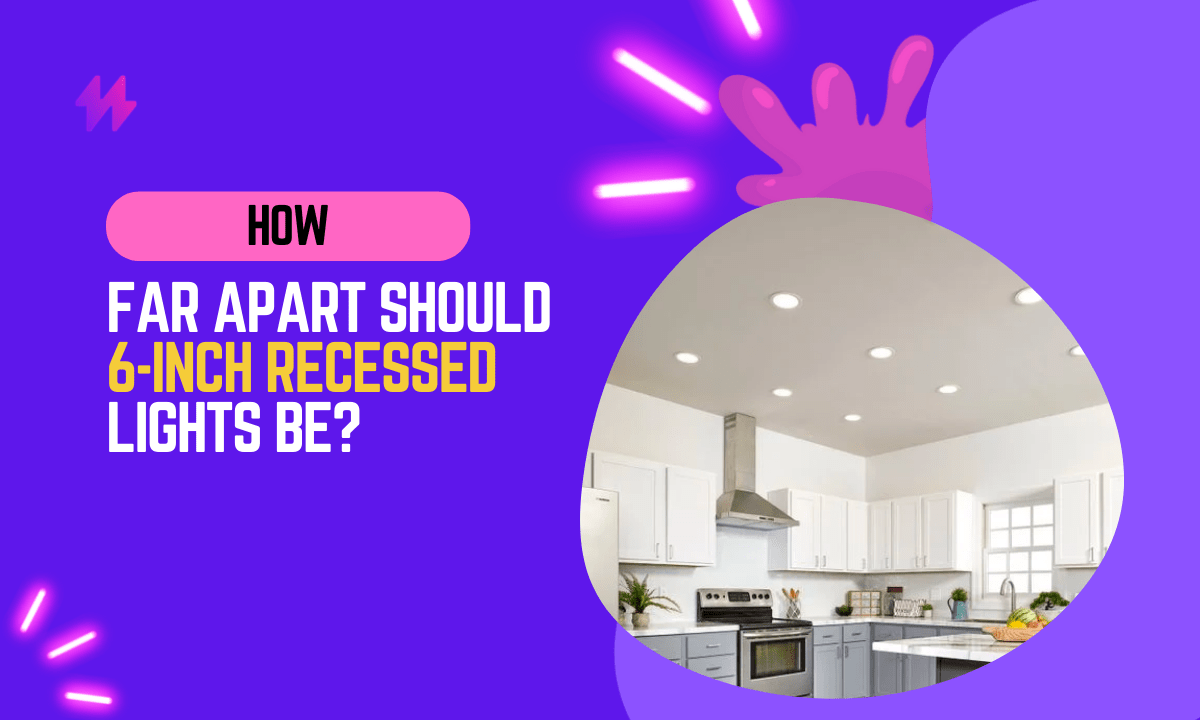
You’ve just installed your new 6-inch recessed lights, and you’re not sure how far apart they should be. You’ve read a few different articles, but you’re still not sure what the best distance is.
I’ve installed hundreds of recessed lights. I’ve found that the best distance to space 6-inch recessed lights are 24 inches apart. This will give you a uniform light distribution and avoid any hot spots.
If you’re not sure how far apart to space your recessed lights, I recommend using a measuring tape to measure the distance between the centers of the lights. Once you have the measurements, you can divide the distance by 24 to find the ideal spacing.
For example, if the distance between the centers of your lights is 48 inches, you would divide that number by 24 to get 2. That means you should space your lights 2 inches apart.
When planning your recessed lighting layout, keeping in mind the distance between the lights is crucial for achieving the desired brightness and minimizing unwanted shadows. For a well-lit room, remember that the appropriate distance should typically allow for 2ft off the wall and 3 feet in between lights, ensuring your space is spacious and effectively illuminated.
Understanding 6-Inch Recessed Lights: How Far Apart Should 6 Inch Recessed Lights Be?
6-inch recessed lights are a popular choice for recessed lighting because they’re a versatile and affordable option. They’re available in a variety of styles, finishes, and wattages, so you can find the perfect recessed lights to meet your needs.
6-inch recessed lights are also relatively easy to install. Most recessed lights come with a mounting kit that makes installation simple. You can usually install recessed lights yourself in just a few minutes.
For homeowners looking to enhance their space, choosing the right lighting fixtures is essential for both aesthetics and functionality. When considering the spacing for your recessed lighting project, ensure that the distance between the lights is always double what it is at the ends to achieve a balanced and illuminated environment.
Optimal Spacing for Recessed Lighting: How Far Apart Should 6-Inch Recessed Lights Be?
Recessed lights are a popular choice for lighting in homes, offices, and other commercial spaces. They’re sleek and stylish, and they can provide even, glare-free light. But how far apart should 6-inch recessed lights be?
The answer to this question depends on a few factors, including the size of the room, the height of the ceiling, and the desired lighting effect.
In general, you should space 6-inch recessed lights 24 to 36 inches apart. This will provide adequate light coverage without creating a harsh or uneven light distribution.
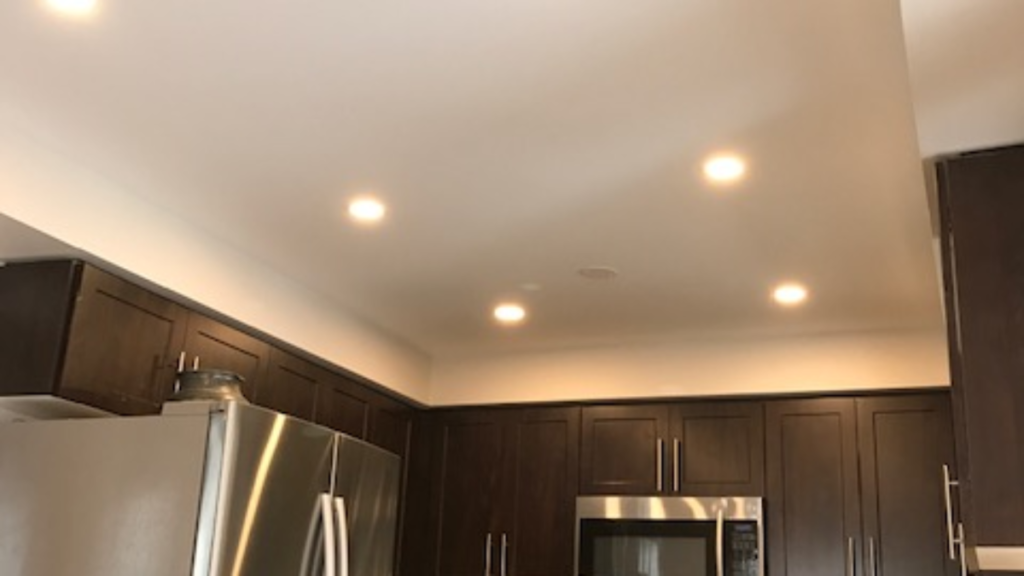
However, you may need to adjust the spacing if you have a particularly large or small room. For example, if you have a large room, you may want to space the lights further apart to avoid creating a cluttered look. Conversely, if you have a small room, you may want to space the lights closer together to provide more concentrated light.
You should also consider the height of your ceiling when spacing recessed lights. If you have a high ceiling, you can space the lights further apart than if you have a low ceiling. This is because the light will have a longer distance to travel, and you’ll need to space the lights accordingly to ensure that the light is evenly distributed.
Finally, you should think about the desired lighting effect you’re trying to achieve. If you want a more dramatic or dramatic lighting effect, you may want to space the lights closer together. Conversely, if you want a more subtle or even lighting effect, you may want to space the lights further apart.
Also read: How to Get a Stuck Light Bulb Out of a Recessed Socket?
When choosing your recessed light layout, implementing the right spacing will ensure a successful lighting layout that achieves optimal brightness levels. For a room with an 8-foot-high ceiling, aim for a distance of 4 feet between each light to enhance ambient lighting and avoid shadowy corners in various house circuits.
Additional Tips for Properly Spacing 6-Inch Recessed Lights
- Use a measuring tape to mark the locations of the recessed lights on the ceiling.
- Make sure that the lights are evenly spaced across the ceiling.
- Use a level to ensure that the lights are installed at the same height.
- Test the lights to make sure that they’re providing the desired amount of light.
By following these tips, you can create a beautiful and functional lighting scheme with your recessed lights.
To achieve the ideal home lighting, consider using dimmers that allow for adjustable brightness, enhancing both functionality and comfort. Proper spacing of recessed lights, particularly ensuring that the distance meets the general lighting guidelines of twice the distance between the wall and your first light fixture, can transform an average room into a beautifully illuminated space.
Advantages of 6-Inch Recessed Lights: Enhancing Your Home Lighting
- Versatile: 6-inch recessed lights can be used in a variety of settings, including homes, offices, and commercial spaces.
- Affordable: 6-inch recessed lights are a relatively affordable option for recessed lighting.
- Easy to install: Most 6-inch recessed lights come with a mounting kit that makes installation simple.
- Energy-efficient: 6-inch recessed lights are available in energy-efficient models that can help you save money on your energy bills.
Choosing the Right 6-Inch Recessed Lights: Essential Tips and Insights

When choosing 6-inch recessed lights, there are a few factors you’ll need to consider.
- Size: The size of the recessed light will determine how much light it produces. For general lighting, you’ll need a recessed light with a diameter of 6 inches. For task lighting, you may need a smaller recessed light.
- Style: Recessed lights come in a variety of styles, including flush mount, semi-flush mount, and timeless. The style of the recessed light will depend on your personal preference and the style of your home.
- Finish: The finish of the recessed light will affect the overall look of your home. You can choose from a variety of finishes, including brushed nickel, oil-rubbed bronze, and white.
- Wattage: The wattage of the recessed light will determine how bright it is. For general lighting, you’ll need a recessed light with a wattage of 60 watts or higher. For task lighting, you may need a lower-wattage recessed light.
- Dimmable: If you want to be able to dim your recessed lights, you’ll need to choose a dimmable model.
Also read: 5 Different Types of LED Lights: A Buyer’s Guide
When choosing 6-inch recessed lights, consider the focal point you want to create within your space and how that will influence your lighting placement. Understanding how far apart should 6 inch recessed lights be is essential for maximizing light output while minimizing shadows, leading to a well-lit environment.
How to Properly Install 6-Inch Recessed Lights: A Complete Guide
Installing recessed lights is a relatively simple task, but it is important to follow the instructions carefully to avoid damaging your walls or ceiling.
To install recessed lights, you will need the following materials:
- Recessed lights
- A stud finder
- A measuring tape
- A level
- A drill
- A drywall saw
- A hammer
- A screwdriver
- A wire stripper
- Electrical tape
Instructions for installing recessed lights:
1. Turn off the power to the electrical circuit that you will be working on.
2. Use a stud finder to locate the studs in the ceiling where you will be installing the recessed lights.
3. Mark the location of the recessed lights on the ceiling with a pencil.
4. Use a measuring tape to measure the distance between the recessed lights.
5. Use a level to make sure that the recessed lights are installed level.
6. Cut a hole in the drywall using a drywall saw.
7. Insert the recessed light into the hole in the drywall.
8. Secure the recessed light to the ceiling using screws.
9. Connect the electrical wires to the recessed light.
10. Turn on the power to the electrical circuit.
You may also like: Do You Put LED Lights On The Ceiling Or Wall?
For your next lighting project, it’s essential to consider the overall dimensions of the room to create a comprehensive lighting plan that emphasizes lighting applications suitable for different tasks. By utilizing downlights, such as LED downlights, you can achieve soft light in small areas, ensuring that every corner is well-lit while minimizing shadows and improving the overall spaciousness.
Frequently Asked Questions (FAQs) about 6-Inch Recessed Lights
Optimal Spacing for 6-Inch Recessed Lights: How Far Apart Should They Be?
The general rule of thumb is to space recessed lights 24 inches apart. However, there are a few factors to consider when determining the ideal spacing for your recessed lights, including:
- The size of the room
- The height of the ceiling
- The type of recessed lights you are using
Ultimately, the best way to determine the ideal spacing for your recessed lights is to experiment until you find a layout that you are happy with.
For optimal general room lighting, a thoughtful recessed lighting layout is essential, as it can significantly impact how lights shine and illuminate your space. By using a light calculator, you can determine the proper distance between fixtures to achieve maximum brightness while minimizing shadows in your home design.
Choosing the Best Type of 6-Inch Recessed Lights for Your Home: Essential Tips and Benefits
There are a variety of different types of recessed lights available on the market, each with its own unique advantages and disadvantages. The best type of recessed light for your home will depend on your specific needs and preferences.
Some of the most popular types of recessed lights include:
When selecting recessed lights for your home, consider assessing the current light placement to enhance your overall lighting design effectively. By strategically utilizing directional lighting and task lighting, you can create multiple lighting patterns that focus on accent lighting and ensure lit corners throughout the space.
- LED recessed lights: LED recessed lights are energy-efficient and long-lasting, making them a good choice for recessed lights in areas that are used frequently.
- Halogen recessed lights: Halogen recessed lights provide a bright, warm light that is ideal for recessed lights in living rooms, dining rooms, and bedrooms.
- Incandescent recessed lights: Incandescent recessed lights are the most affordable type of recessed light, but they are also the least energy-efficient.
What Are the Benefits of 6-Inch Recessed Lights?
Recessed lights offer several benefits over traditional light fixtures, including:
Recessed lights, including canless downlights and pot lights, can dramatically shift the ambiance in a room, enhancing both functionality and aesthetics with bright light beaming throughout the space. Choosing the right spacing formula and light installations can maximize the effect of the recessed lighting housing, creating a cohesive look while minimizing shadows across the entire wall space.
- They are a great way to add extra light to a room without taking up valuable wall space.
- They can be installed in a variety of different ceiling types, including drywall, plaster, and wood.
- They are energy-efficient and long-lasting.
- They can be dimmed or brightened to create the perfect lighting atmosphere.
- They are a great way to add style and sophistication to a room.
Understanding the Drawbacks of 6-Inch Recessed Lights: Key Considerations
Recessed lights do have a few drawbacks, including:
While recessed lights offer a sleek appearance, they can sometimes create minimal shadows and require careful consideration of light bulb choices and wattage to ensure adequate brightness. Additionally, investing in a quality lighting kit with dimmer switches can allow for customized control of light intensity and improve the overall ambiance in your space, making it essential to assess space fixtures and their layout.
- They can be more expensive than traditional light fixtures.
- They can be difficult to install, especially if you are not experienced with electrical work.
- If they are not installed correctly, they can create a fire hazard.
- They can be difficult to clean.
Final Thoughts on 6-Inch Recessed Lights: Key Insights and Recommendations
In conclusion, determining the optimal spacing for 6-inch recessed lights is essential to achieving both functional and aesthetic lighting effects within any space. The general guideline suggests that the distance between these fixtures should be about half of the ceiling height, ensuring that light is distributed evenly and effectively throughout the area. For instance, in a room with an 8-foot ceiling, recessed lights should ideally be spaced approximately 4 feet apart. This configuration helps to avoid dark spots between the lights, creating a smooth and uniform illumination that enhances the room’s ambiance and functionality. Moreover, it is crucial to consider the purpose and layout of the room; task-oriented spaces like kitchens or work areas may require closer spacing for more concentrated lighting, whereas living areas might benefit from a more dispersed arrangement for a softer effect.
Furthermore, the placement strategy should not only focus on the distance between each light but also on their alignment with key features of the room, such as artwork, furniture, and architectural elements. Strategic placement can accentuate interior design details, improve visibility in high-use areas, and contribute to the overall mood and functionality of the space. Adjustments might also be necessary based on the type of bulb and the beam angle of the recessed lights, as these factors influence the spread and intensity of the light. By carefully planning the layout and considering these variables, homeowners and designers can ensure that their lighting design is both effective and visually appealing. Ultimately, well-planned lighting not only serves its practical purpose but also elevates the aesthetic quality of the environment, making it a crucial component of interior design.
How Far Apart Should 6 Inch Recessed Lights Be | Factors Influencing the Spacing of 6Inch Recessed Lights
The spacing of 6-inch recessed lights is influenced by various factors, including room size and configurations. Understanding how far apart should 6 inch recessed lights be involves considering the width of the space and desired light pattern. Smaller rooms may require fewer lights, while larger areas benefit from more bulbs to achieve adequate brightness, typically requiring them to be placed closer together. The optimal distance between fixtures is often dictated by the power sources of the light kit being used. For example, LED bulbs can increase the efficacy, allowing for a maximum distance of 8-10 feet, while traditional light bulbs may necessitate reducing the spacing for focal point lighting. Balancing these factors ensures a well-lit area without creating dark edges or overly bright zones, meeting the space criterion for effective illumination in everyday activities, such as cooking for 2-4 hours or enjoying ambiance during gatherings.
How Far Apart Should 6 Inch Recessed Lights Be | Room Size and Configuration
The distance between 6-inch recessed lights can significantly depend on the size and configuration of the room. Larger spaces often require many lights to ensure even illumination, while smaller rooms can rely on fewer fixtures. Understanding how far apart should 6-inch recessed lights be is crucial for achieving the desired outcome. A general guideline is to space the lights approximately 4 to 6 feet apart for standard room sizes. Specialty lighting setups may require adjustments to this distance, particularly when aiming for a brighter effect.
Ceiling height also plays a vital role in determining the spacing of recessed lights. Higher ceilings may necessitate a larger above distance between fixtures to ensure that light power sources effectively illuminate the area. Long wires can complicate the installation, so planning the layout of new lights for an optimal configuration is essential. By carefully considering the room’s dimensions and ceiling height, you can answer the question of how far apart should 6-inch recessed lights be, achieving a well-lit and aesthetically pleasing environment.
Ceiling Height Considerations
Ceiling height plays a crucial role in determining how far apart should 6 inch recessed lights be installed. Higher ceilings may require a wider spacing to ensure even light distribution, while lower ceilings can necessitate closer placement to avoid shadows. If the ceiling is particularly high, mimicking the principles used in street lighting can provide valuable insight. This means considering how light spreads from a fixture placed at a greater height and adapting the placement accordingly.
For spaces with standard ceiling heights, a common guideline is to keep six-inch recessed lights about four to six feet apart. This distance ensures sufficient illumination without creating overly bright or dark areas. However, how far apart should 6 inch recessed lights be ultimately depends on the overall room configuration, including any architectural features that may influence lighting needs. Proper planning in these areas contributes to a cohesive and well-lit environment.
Techniques for Measuring Recessed Light Placement
Proper placement of recessed lights is essential for optimal lighting and aesthetics in a room. Understanding how far apart 6 inch recessed lights should be involves considering various techniques. The 1.5 foot rule suggests spacing lights at a distance of 1.5 feet from walls and 6 to 8 feet apart in larger areas. Creating a grid pattern can also be effective, ensuring even distribution throughout the space. Both methods help achieve a well-lit environment while addressing the question of how far apart 6 inch recessed lights should be, resulting in a balanced and inviting atmosphere.
The 1.5 Foot Rule
One common guideline for spacing 6-inch recessed lights is to maintain a distance of about 1.5 feet from the wall and each other. This technique offers a good balance of illumination and reduces the risk of shadows. It also serves as a helpful benchmark for determining how far apart should 6 inch recessed lights be, ensuring an even distribution of light throughout the room.
Applying the 1.5 foot rule can enhance both aesthetics and functionality. This spacing helps create a well-lit environment, making it particularly effective in rooms with low to moderate ceilings. Following this guideline allows homeowners to maximize their lighting design while addressing the question of how far apart should 6 inch recessed lights be, ultimately leading to a more inviting atmosphere.
Creating a Grid Pattern
A grid pattern is an effective method for determining how far apart should 6 inch recessed lights be in a given space. This layout involves evenly spacing the lights in a systematic arrangement across the ceiling. The goal is to create a uniform distribution of light, minimizing shadows and ensuring adequate illumination throughout the room. By applying this technique, you can enhance the overall aesthetic appeal while optimizing functionality.
To implement this grid pattern, start by measuring the dimensions of the room and considering how far apart should 6 inch recessed lights be based on the ceiling height and room usage. A common approach is to place lights in a grid that is about 4 to 6 feet apart, depending on the specific requirements of the space. This spacing creates a balanced look while ensuring that no area remains dimly lit, resulting in a well-lit and inviting environment.

